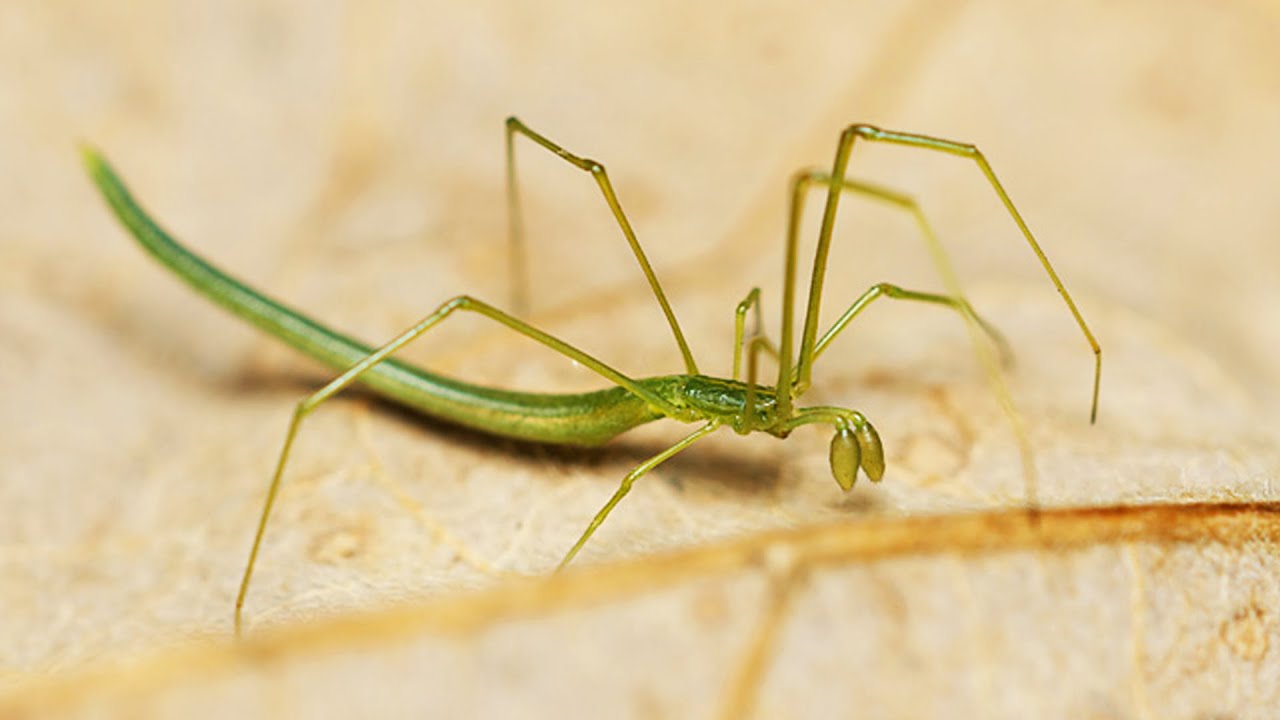
The Twig Spider, also known as the Stick Spider or the Bark Spider, is a fascinating creature that belongs to the family of spiders known as Hersiliidae. These small, yet remarkable spiders have evolved unique characteristics that enable them to camouflage effectively in their natural habitats.In this article, we will delve into the world of Twig Spiders and uncover ten astonishing facts about these intriguing arachnids. From their unusual appearance to their hunting techniques, these facts will shed light on the remarkable adaptations that make Twig Spiders so intriguing.So, if you’re ready to discover the hidden wonders of the Twig Spider, let’s dive into the mesmerizing world of this enchanting arachnid species. Prepare to be amazed by the incredible abilities and adaptability of these miniature wonders of nature.
Key Takeaways:
- The Twig Spider is a master of disguise, blending seamlessly into its environment to catch unsuspecting prey with lightning-fast reflexes. Its unique camouflage abilities have even inspired advanced technologies in various industries.
- Twig Spiders play a crucial role in nature by controlling insect populations and maintaining ecological balance. Their remarkable camouflage skills help them stay hidden from predators, ensuring their survival in the competitive animal kingdom.
The Twig Spider’s Incredible Camouflage Abilities
The Twig Spider, also known as the Phrynarachne decipiens, is a remarkable arachnid known for its extraordinary camouflage abilities. With a body shape resembling twigs or branches and coloring that mimics its surroundings, this master of disguise can effortlessly blend into its environment, making it almost indistinguishable from real twigs or branches.
A Tiny Hunter in the Spider World
Despite their small size, Twig Spiders are formidable hunters. They patiently wait on trees or the forest floor, perfectly still, until an unsuspecting insect comes within range. With lightning-fast reflexes, they capture their prey by swiftly striking and injecting venom to immobilize their victims.
An Impressive Range of Twig Spider Species
The Twig Spider family consists of numerous species that can be found in various parts of the world, including Asia, Africa, and Australia. Each species showcases its own unique adaptations and characteristics, adding to the diversity of this fascinating arachnid family.
A Master of Anatomical Mimicry
What sets the Twig Spider apart from other spiders is its exceptional ability to mimic not only the appearance of twigs but also their movements. They use their long, slender legs to sway gently, imitating the subtle movements of branches swaying in the wind. This level of anatomical mimicry allows them to fool both predators and potential prey alike.
Twig Spiders: Masters of Disguise
Thanks to their incredible camouflage skills, Twig Spiders can stay hidden from predators such as birds, snakes, and larger spiders. Their remarkable disguise helps them avoid being spotted and increases their chances of survival in the competitive world of the animal kingdom.
Silk as a Construction Material
Like other spiders, Twig Spiders produce silk, but they use it in unique ways. These clever arachnids construct their egg sacs using silk, carefully attaching them to the twigs or branches where they reside. The silk not only provides structural support but also adds an extra layer of camouflage, ensuring the safety of their offspring.
A Life of Solitude
Twig Spiders are solitary creatures, spending most of their lives hidden in their camouflaged habitats. Males and females typically come together only for mating purposes, with the female usually taking sole responsibility for guarding the eggs and ensuring the survival of the next generation.
Uniquely Shaped Bodies
The bodies of Twig Spiders feature elongated abdomens and modified leg segments, giving them the appearance of twigs or small branches. This distinctive shape helps them blend seamlessly into their surroundings, providing them with a strong advantage when it comes to stealth and survival.
A Noteworthy Industrial Inspiration
The incredible camouflage abilities of Twig Spiders have drawn the attention of engineers and designers. Researchers have studied their unique adaptations to inspire the development of advanced camouflage technologies, which can have applications in military, fashion, and even architecture.
An Important Role in Ecological Balance
Twig Spiders play a crucial role in maintaining ecological balance. As natural predators of insects, they contribute to controlling the population of pests and help maintain the health and harmony of the ecosystem they inhabit.
Conclusion
In conclusion, the Twig Spider is truly a fascinating creature with its unique appearance and incredible adaptations. From its ability to camouflage perfectly within its surroundings to its interesting hunting techniques, the Twig Spider never fails to astonish. With its elongated body and stealthy movements, it is no wonder that this spider is a true master of disguise.
Learning about the Twig Spider and its astonishing facts is not only an interesting endeavor but also a reminder of the incredible diversity and ingenuity found in the animal kingdom. It is worth appreciating and protecting these remarkable creatures so that future generations can continue to marvel at their extraordinary abilities.
FAQs
Q: How big do Twig Spiders usually get?
A: Twig Spiders are relatively small, ranging from 4 to 6 millimeters in length. Their slender bodies and twig-like appearance make them appear even smaller.
Q: Are Twig Spiders dangerous to humans?
A: No, Twig Spiders are not considered dangerous to humans. They are harmless creatures and their venom is not potent enough to cause any harm to humans. They prefer to stay hidden and are not known to be aggressive.
Q: Where can I find Twig Spiders?
A: Twig Spiders are distributed across various parts of the world, including tropical and subtropical regions. Look for them in areas with dense vegetation, such as forests and gardens. They are well-camouflaged and can be challenging to spot.
Q: What do Twig Spiders eat?
A: Twig Spiders primarily feed on small insects like ants, flies, and other small arthropods. They are agile hunters and use their elongated bodies to capture their prey with precision.
Q: How do Twig Spiders camouflage themselves?
A: Twig Spiders have a remarkable ability to mimic twigs and branches. They have elongated bodies with appendages that resemble leaves and twigs, helping them blend seamlessly into their surroundings. This camouflage provides them with excellent protection from predators.
Q: How do Twig Spiders reproduce?
A: Twig Spiders engage in a unique reproductive behavior known as sexual cannibalism. After mating, the female may consume the male. This behavior is thought to provide the female with the necessary nutrients for producing eggs.
Q: Are Twig Spiders social creatures?
A: No, Twig Spiders are solitary creatures. They prefer to live and hunt alone, without any social interactions. They are highly specialized to live an independent lifestyle in order to enhance their chances of survival.
Q: How long do Twig Spiders live?
A: The lifespan of Twig Spiders can vary depending on the species and environmental conditions. On average, they may live for several months up to a year.
Q: Do Twig Spiders build webs?
A: No, Twig Spiders do not build traditional webs like other spider species. They rely on their exceptional camouflage to capture prey, rather than constructing silk structures.
Q: Can Twig Spiders be kept as pets?
A: Twig Spiders are not commonly kept as pets. Due to their specialized needs and camouflage adaptations, it can be challenging to provide the appropriate habitat and diet for them in captivity.
Was this page helpful?
Our commitment to delivering trustworthy and engaging content is at the heart of what we do. Each fact on our site is contributed by real users like you, bringing a wealth of diverse insights and information. To ensure the highest standards of accuracy and reliability, our dedicated editors meticulously review each submission. This process guarantees that the facts we share are not only fascinating but also credible. Trust in our commitment to quality and authenticity as you explore and learn with us.


